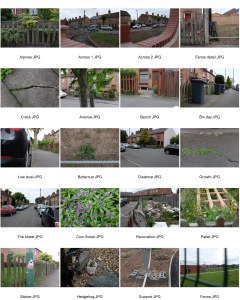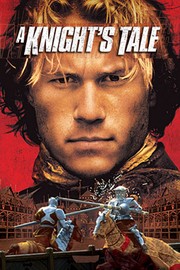Make a short series of photographs about a road near where you live. You may choose to photograph the street you live or work on, or another nearby.
How you choose to approach this task is your decision, but use this exercise to develop the observational skills that will be challenged in Assignment Two. The objective is to try to think about something that is familiar to you in a different way. You don’t need to make any preparations for this exercise. Work intuitively, and try not to labour the exercise. Compile a digital contact sheet from your shoot and evaluate your work, identifying images of particular interest.
Watch one of the films mentioned in this section or any other ‘road movie’ of your choice. Write a short review (around 500 words), focusing on how the road features within the film’s narrative.
Road Exploration
The road I selected was a little avenue made up of terraced miners-houses built in 1882. These house were attached to the open cast coal mine and were the tied accommodation for the miners whilst the pit was in operation. What I found interesting about this little street, is that it has remained unchanged even though it has been engulfed by modern housing estates on all sides. It’s effectively a walk back in time.
Attached below is a contact sheet of 20 photographs I selected from my exploration of the road. I selected a mix of distance shots to show the location and detail shots to enable the viewer to get a feel for the environment. During my walk I took significantly more distance shots that close-ups, but using them in the same proportion to create even this contact sheet make the ‘portfolio’ very boring. When selecting and ordering the images, I automatically balanced leading lines with straight-on detailed shots to create a gentle dynamic challenge for the viewer.
Film review of ‘A Knights Tale’ (2001), directed by Brian Helgeland
This film tells the story of a low-born 14th century serf William Thatcher (Heath Ledger) and his friends Roland (Mark Addy) and Wat (Alan Tudyk) who are thrown into a quandary upon the death of their knight. By lucky chance, a very naked Geoffrey Chaucer (Paul Bettany) happens upon the group and offers them ‘Patents’ for food and clothes. Jousting was a pastime only permitted to knights, who were of noble birth and Letters of Patent were documents signed by a sovereign, conferring such rights as a title of nobility. These documents had to be presented before each joust to enable the knight to enter the tournament.
With newly forged patents and the dead knight’s suit of armour Thatcher and his sidekicks Roland and Wat, not forgetting Chaucer, set about training Thatcher to become the knight he knows he can be.
The next part of the movie is given over to ‘the journey’, not just the physical move from (presumably) Canterbury to London, but the development of Thatcher’s skill as a knight and the growth of friendships, understanding and respect. During this period we see numerous training mishaps and some gory jousting activity, none of which deters our hero. These scenes are invariably set in picturesque locations that show off the rolling English countryside to best advantage. The panning shots required to capture the joust training lend themselves to this romantic view of the landscape. Interestingly, not all of the scenes portrayed in the film are located on route from Canterbury to London. The evening camps also add to our understanding of the environment and the conditions at the time, for example, baked hedgehog for dinner (I’m not actually sure if this is true).
As Thatcher takes his place in the arena we see that he is not only capable, he is also ambitious, driven and ‘destined’ to become a jousting champion. However, the team are currently strapped for cash and are unable to afford the repairs to Thatcher armour, fortunately, entre a blacksmithess named Kate (Laura Fraser), whose gender prevents her from being taken seriously by the other knights, but must be relatively good because she knows her trade. The team, grudgingly employ her – after all, beggars can’t be choosers – and over time she forges Thatcher a beautiful suit of armour.
Unsurprisingly, Thatchers jousting success puts him firmly in the sights of the dangerous and evil Count Adehmar (Rufus Sewell) the existing champion and also the suitor of Lady Jocelyn (Shannyn Sossamon) the daughter of the local land-owning ruler. Naturally, Thatcher has fallen for Jocelyn and this only makes the Count more vengeful.
The Count cannot accept that Thatcher can come from nowhere and become a champion knight; thus he sets about investigating Thatchers background to expose him in the arena. This is not as difficult as it might seem because Thatcher has to visit his father in London, soon everything becomes clear.
So standard format exposé, Thatcher is disgraced and put in the stocks; the crowd are shocked and scandalised that own of their own could be so presumptuous! Nonetheless, one good turn deserves another and we are cast back to one of the jousts when Thatcher allowed an injured knight to retire from the field without disgrace or loss. This knight is none other than Edward, the Black Prince and he knights Thatcher there and then allowing him to re-enter the joust and win both the championship and the girl.
